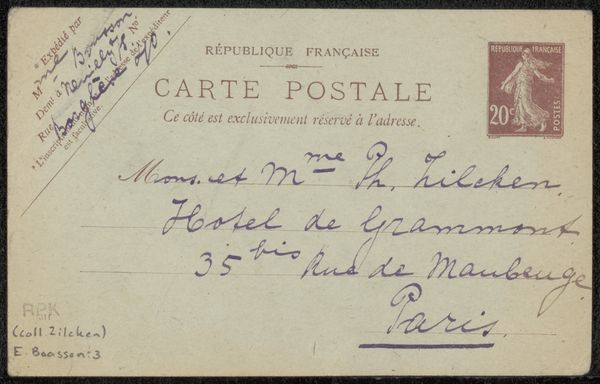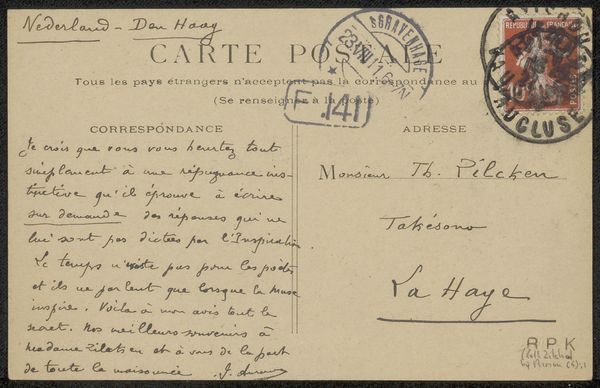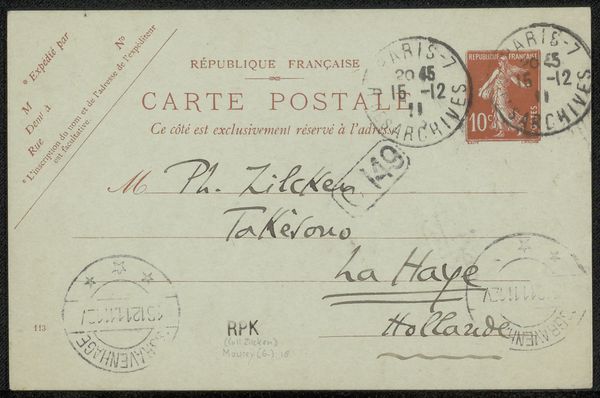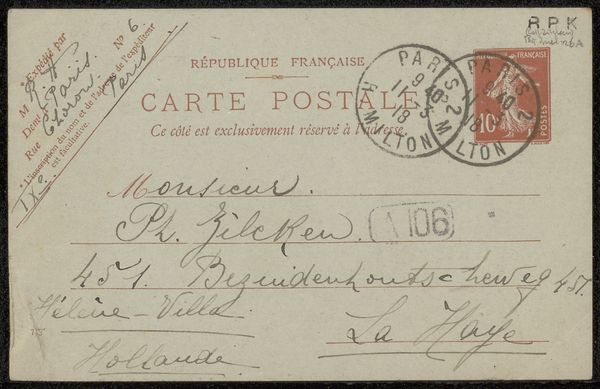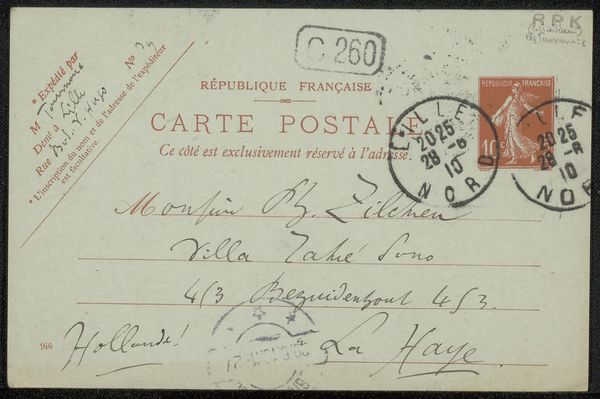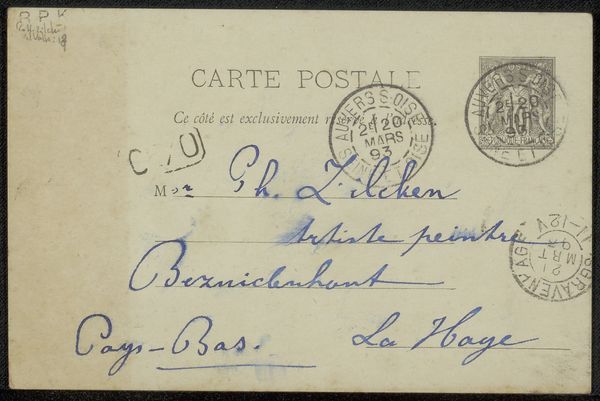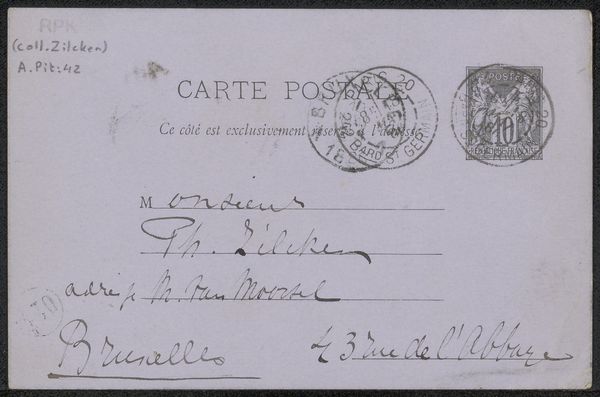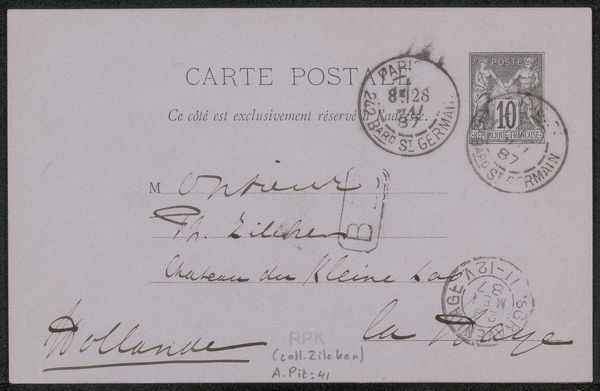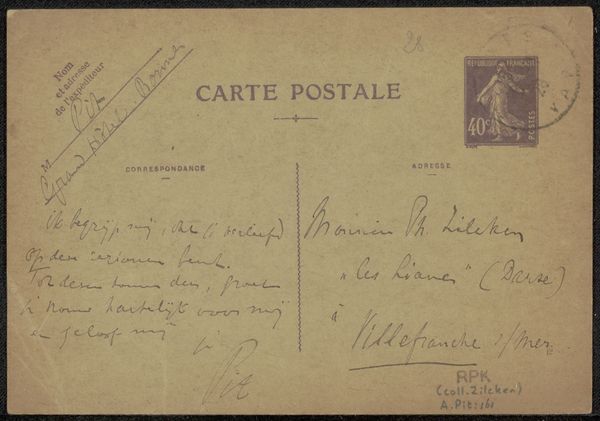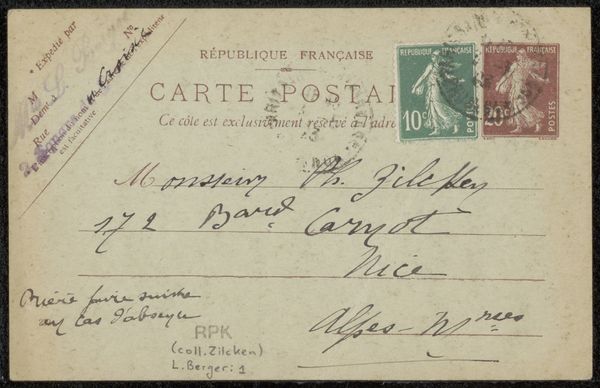
drawing, paper, ink
#
drawing
#
paper
#
ink
#
intimism
#
post-impressionism
Copyright: Rijks Museum: Open Domain
Editor: Here we have Albert Baertsoen's "Briefkaart aan Philip Zilcken," made before 1898, using ink on paper. It’s quite fascinating to see a postcard elevated to the level of art. What strikes me is the immediacy of it – a snapshot of a communication from another era. How do you interpret this work? Curator: It’s crucial to understand this postcard not just as a piece of personal correspondence, but as a crafted object reflecting its means of production and circulation within the postal system. Consider the paper itself: its specific weight, the texture affecting the ink's absorption. The printing of "Carte Pneumatique" indicates a particular, rapid mode of communication within Paris, connecting it to a network of technology and labor. Editor: So you're suggesting that the card's materiality and the system that delivered it are as important as the message itself? Curator: Absolutely. The standardization implied by the printed text contrasts sharply with the hand-written address. It’s where labor is seen. Think of the postal workers, the industrial production of paper and ink – all embedded in this seemingly simple object. Where does "art" begin and the everyday labor end here? Editor: I hadn't considered all the layers of production involved. It reframes my view, shifting it from simply the artist and recipient to all the other workers. Curator: Precisely. By examining these material conditions and the broader social context, we can move beyond a purely aesthetic appreciation and understand how art is fundamentally intertwined with production, consumption, and even the social networks of the time. Editor: That's really broadened my perspective. I see the postcard now as less about its surface content and more about the system of labor and technology it represents. Curator: Exactly. It's about uncovering the processes that make art possible and interrogating what we value and why.
Comments
No comments
Be the first to comment and join the conversation on the ultimate creative platform.
